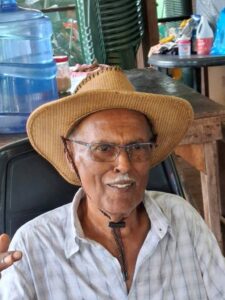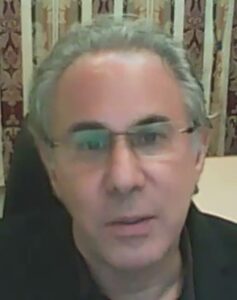These are excerpts from an Indo-Caribbean Cultural Centre Thought Leaders Forum held in September, 2024.
 Rosie Paul of India believes that holistic sustainability is important. She says, “When thinking of sustainability, it is not just about the environment, but it is also about cultural impacts, and socioeconomic impacts. You need to look at all the four pillars when you want to really be sustainable, and that is something that we are trying to do.”
Rosie Paul of India believes that holistic sustainability is important. She says, “When thinking of sustainability, it is not just about the environment, but it is also about cultural impacts, and socioeconomic impacts. You need to look at all the four pillars when you want to really be sustainable, and that is something that we are trying to do.”
“We also believe that looking at the vernacular can really give us clues to the challenges that we are facing today, and how we need to intervene to respond to our future challenges. Why is it that we are struggling to make our buildings last?
“We believe that innovation is necessary when using traditional materials. It is pointless to not learn from the knowledge that existed in the past, and what was very interesting is, they found low-carbon adaptive solutions when they were building.”
 Sridevi Changali of India says, “I think architects do have a bigger responsibility of creating greener livelihoods and helping communities. When stakeholders themselves are part of the building process, it becomes a really lovely place to be on site; and it is really nice to feel the intermingling of energies – and there is a great ownership that comes from including the stakeholders in the building and design process.”
Sridevi Changali of India says, “I think architects do have a bigger responsibility of creating greener livelihoods and helping communities. When stakeholders themselves are part of the building process, it becomes a really lovely place to be on site; and it is really nice to feel the intermingling of energies – and there is a great ownership that comes from including the stakeholders in the building and design process.”
“We feel that it is very important, since we are in a niche sector, to educate and impart knowledge to younger generations and people even outside of our profession. We take outreach and skill-building very seriously, and we do a lot of workshops.
 John Mohanlal Ramnandanlall of Suriname says, “We made an old-time historical house in Suriname from Indian indentureship style. I made the model and then the big house that you can live in for 30-40 years.”
John Mohanlal Ramnandanlall of Suriname says, “We made an old-time historical house in Suriname from Indian indentureship style. I made the model and then the big house that you can live in for 30-40 years.”
“The house is made from wood, the walls made from cow dung, wooden louvres, rice paddy and some grasses. Indoor and outdoor furniture are made from natural materials. The cot is made from woven rope and furniture carved from logs. The roof is made from thatched rice paddy in the model home, but metal is used in bigger models because of the cost.”
“Every day the temperatures are getting hot, but building houses with parsara wood keeps your house cool.”
 David Fojo of Trinidad and the US says, “By using Vastu with the best modern, green design and development knowledge on the planet, we can build cities that are superior. We are designing on the energy grid north, south, east, west – cardinal points – with green courtyards in the middle.”
David Fojo of Trinidad and the US says, “By using Vastu with the best modern, green design and development knowledge on the planet, we can build cities that are superior. We are designing on the energy grid north, south, east, west – cardinal points – with green courtyards in the middle.”
“We can design buildings where the people are happier. There are studies showing that people can be 30 per cent more productive at their jobs because of the built environment; therefore, companies can be 30-40 per cent more profitable. Communications, relationships…they are all better because of being greener and because of being designed in harmony with all the laws of nature.”
“Part of being Vastu is we literally have the knowledge on the planet to create heaven on earth in the built environment and in our own lives, and the only thing we need now is just developers who really understand this.”
The unedited recording can be accessed at: https://www.youtube.com/@dmahab/streams
You can read the original article at newsday.co.tt
